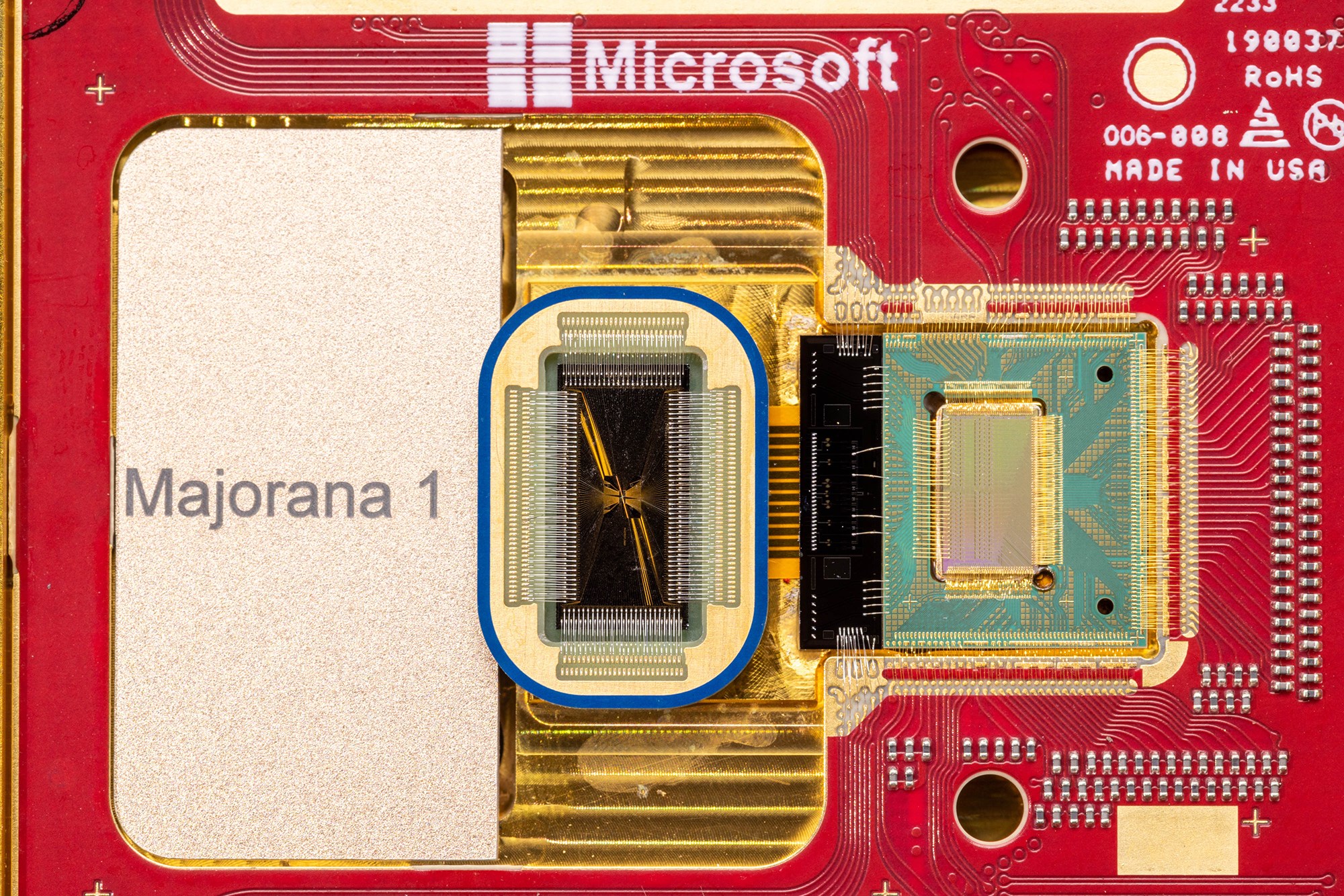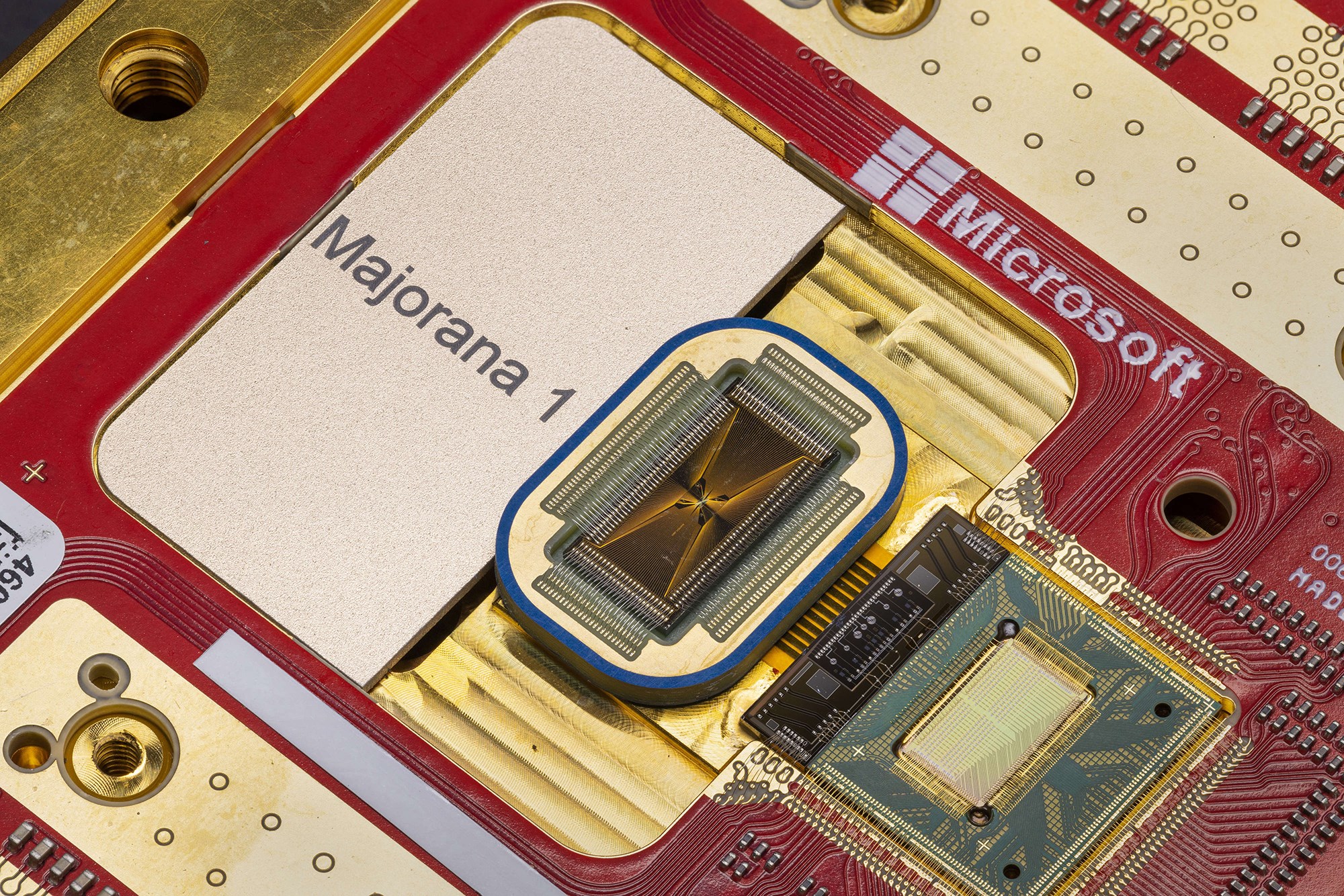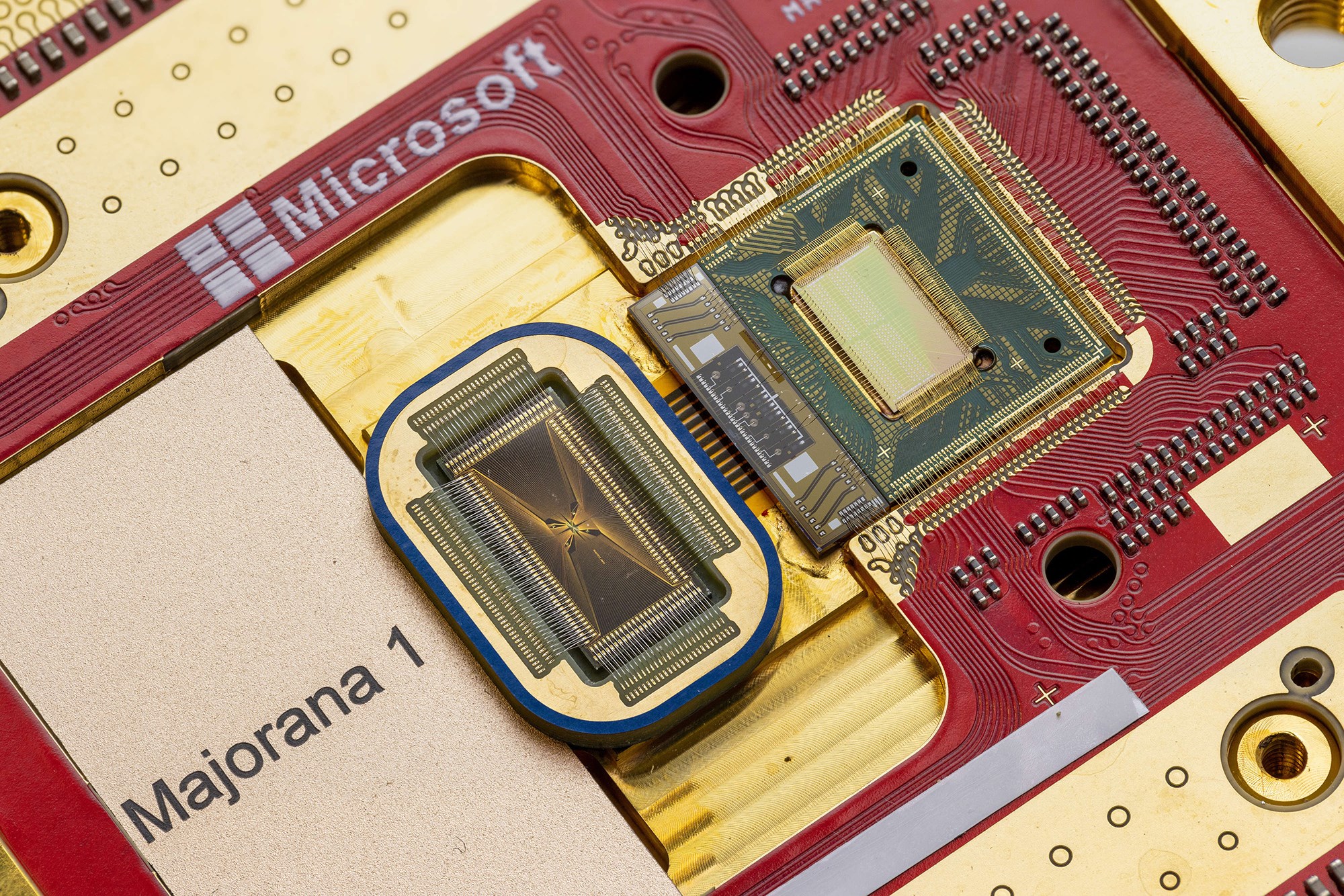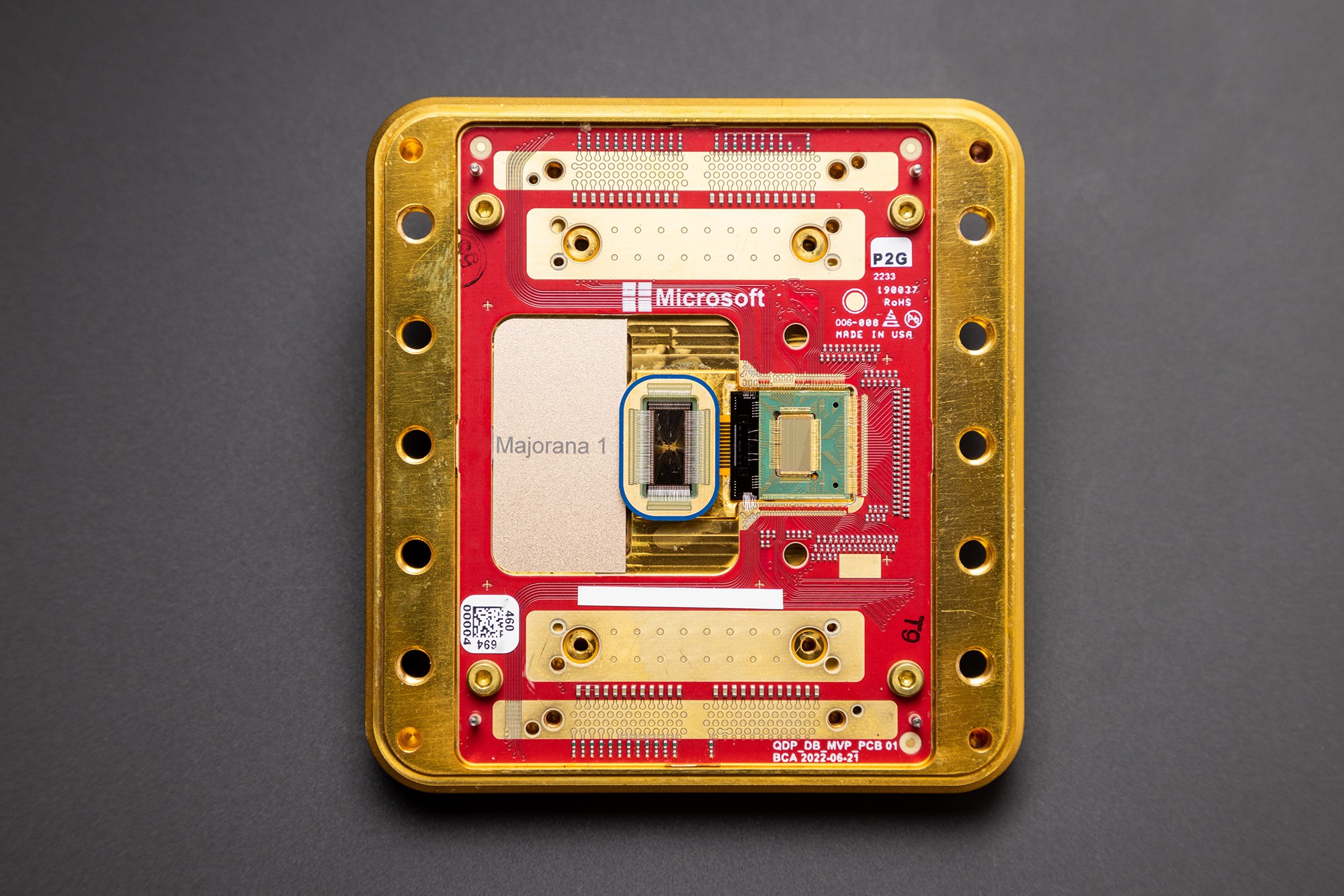 Microsoft has developed a new era processor that will break down in the field of quantum information by taking the fruit of 17 years of intensive research: Majorana 1. This processor is seen as an important step that can reveal the potential of quantum computers to solve problems on the industrial scale. The company has announced that this new quantum processor, which is produced with topological core architecture, has been designed to have one million cubits in the future.
Microsoft has developed a new era processor that will break down in the field of quantum information by taking the fruit of 17 years of intensive research: Majorana 1. This processor is seen as an important step that can reveal the potential of quantum computers to solve problems on the industrial scale. The company has announced that this new quantum processor, which is produced with topological core architecture, has been designed to have one million cubits in the future.Before going into details, you need to give some preliminary information. While traditional computers work with lice of 0 and 1s, quantum computers use data units called Qubit or Cubit based on superposition. However, the cubits are extremely sensitive to external factors and they are very difficult to build a reliable system because they are tending to make mistakes. Giants such as IBM, Google and Microsoft have been competing to develop stable cubits for years. But Microsoft’s solution at this point was to use the Majorana particles described by the theoretical physicist Ettore Majorana in 1937 instead of electrons in the quantum processor.
Quantum computers, which exceed the processing power of traditional computers, have the potential to revolutionize in critical fields such as sustainable agriculture, chemical discoveries and drug development. However, one of the biggest obstacles to large -scale quantum calculation – as we have mentioned – to produce and control error -resistant cubits and control them. Microsoft, to solve this problem to solve the topokonductor (topoilethane or topological superconductive) called a brand new material developed with a processor.
An unique material
 Microsoft’s quantum processor is produced with a form of substance that has never been seen in the physical world. These topological superconductors, which are neither solid, nor liquid, nor gas, are formed by combining indumn Arsenite (semiconductor) and aluminum (superconducting) layers at the atom level.
Microsoft’s quantum processor is produced with a form of substance that has never been seen in the physical world. These topological superconductors, which are neither solid, nor liquid, nor gas, are formed by combining indumn Arsenite (semiconductor) and aluminum (superconducting) layers at the atom level.When this material is cooled close to the absolute zero degrees and adjusted with magnetic fields, it forms the topological superconducting nanothellers with majorana zero modes (MZM) at the ends. The MZMs behave like Cubit and storage the quantum knowledge through ‘parity’. Since the electrons move in pairs in a super conduct, they can easily be detected due to a single number of electron extra energies. The technology developed by Microsoft produces cubits that can store quantum information and protect them from environmental interactions.
 Another major disadvantage of quantum computers is that the data can easily deteriorate due to noise from the outdoor. Microsoft has developed an electrical charge store called Quantum Dot to solve this problem. Thanks to microwave -based measurement techniques, it can correctly read quantum information and perform error correction. Microsoft connects this quantum point to the ends of majoana nanothels, thus measuring the Cubit state.
Another major disadvantage of quantum computers is that the data can easily deteriorate due to noise from the outdoor. Microsoft has developed an electrical charge store called Quantum Dot to solve this problem. Thanks to microwave -based measurement techniques, it can correctly read quantum information and perform error correction. Microsoft connects this quantum point to the ends of majoana nanothels, thus measuring the Cubit state.This innovative method does not require special settings for each cubite one by one, contrary to traditional error correction approaches. Instead, with a single quantum point, many cubits can be connected to simple digital impacts to provide data transmission.
 This process can provide a precise measurement as detecting the difference between one billion and one billion one. Thus, it can be understood whether the cubite double (EVEN) or in one (ODD) is in a single (ODD) situation, which is critical for quantum calculations.
This process can provide a precise measurement as detecting the difference between one billion and one billion one. Thus, it can be understood whether the cubite double (EVEN) or in one (ODD) is in a single (ODD) situation, which is critical for quantum calculations.Performing the impossible with engineering
 The status of the topological matter, that is, the presence of a completely different substance from classical phases such as solid, liquid and gas may seem only a theoretical concept. In fact, even when I read the information shared by Microsoft, I continued to think that it was a utopian concept. However, Microsoft’s innovative approach has been built on this concept.
The status of the topological matter, that is, the presence of a completely different substance from classical phases such as solid, liquid and gas may seem only a theoretical concept. In fact, even when I read the information shared by Microsoft, I continued to think that it was a utopian concept. However, Microsoft’s innovative approach has been built on this concept.Topoiletters or topological superconductors are based on a specially improved material structure to create this new type of substance. Microsoft’s topological cubit architecture consists of aluminum nanothels designed in the form of H. Four separate controllable majorana particles are brought together to form a single cubite. These cubits can form a scaleable structure by arranging side by side on the chip.
When you write like this, the process seems easy, but on the contrary, an engineering wonder lies here. In order to create these exotic particles that are not spontaneous in nature, Microsoft engineers need to work by creating an excellent superconducting interface at almost absolute zero temperatures, under sensitive magnetic fields, and an excellent superconducting interface. Even the smallest error at the atomic level can cause the cubite to collapse. Microsoft believes that despite this sensitivity, new quantum architecture can be much faster than other approaches in the sector.
Now you need to take one more step
 With the success of the storage and recovery of quantum information, Microsoft is moving to exhibit the scalability of technology based on a single Cubit device called Tetron. In the coming years, it plans to build an error -resistant prototype (FTP).
With the success of the storage and recovery of quantum information, Microsoft is moving to exhibit the scalability of technology based on a single Cubit device called Tetron. In the coming years, it plans to build an error -resistant prototype (FTP).Microsoft’s groundbreaking quantum approach is also supported by the US Defense Advanced Research Projects Agency (DARPA). Microsoft’s work attracts great attention within the scope of the US2QC program, where systems that can find answers to problems that are not solved by traditional computers cannot solve.
Today, the Majorana 1 chip, which is introduced today, only has the size of the palm and contains eight topological cubits in it. However, this chip was designed to turn into huge quantum systems with one million cubite capacity in the future. This means that quantum computers can be similar to desktop computers. According to Microsoft, thanks to this revolutionary processor, it will be saved from billions of dollars of laboratory work in many areas from sustainable agriculture to drug discoveries.